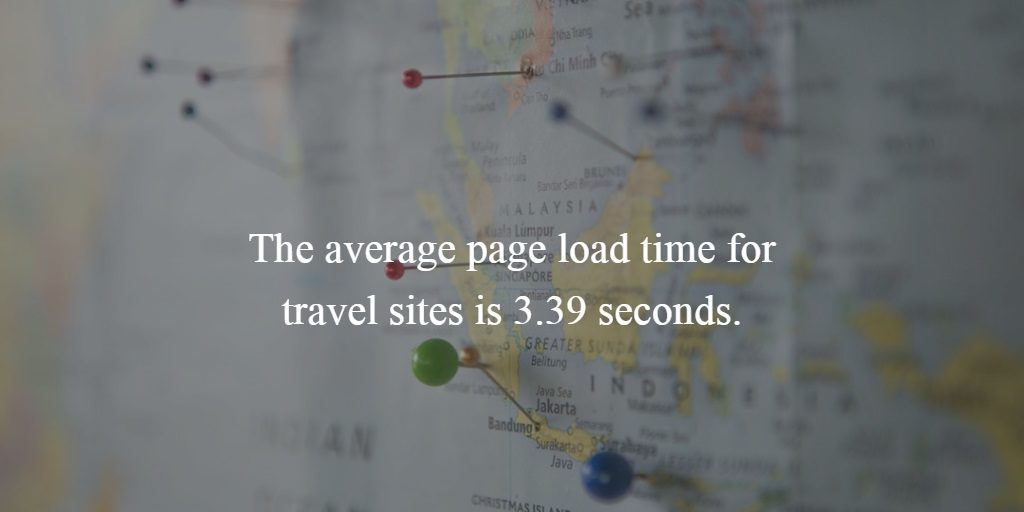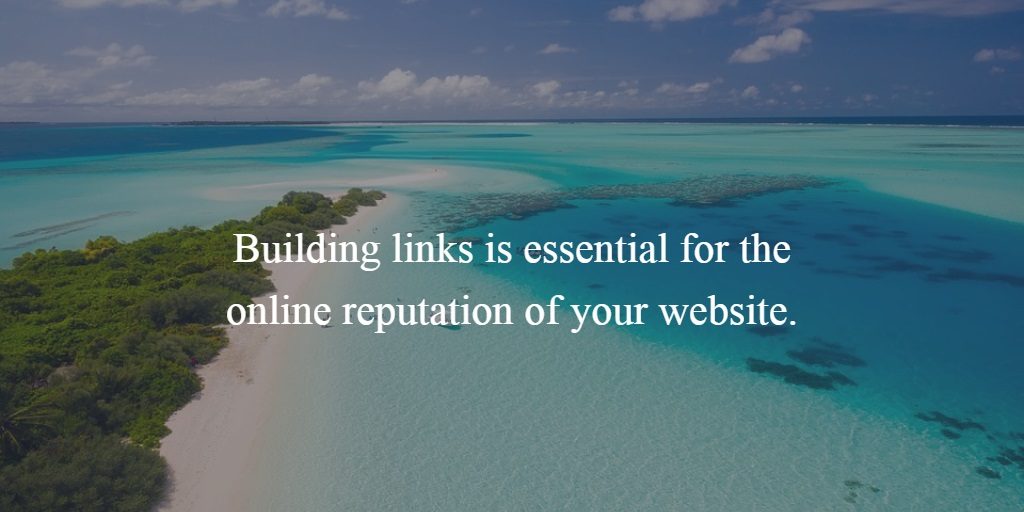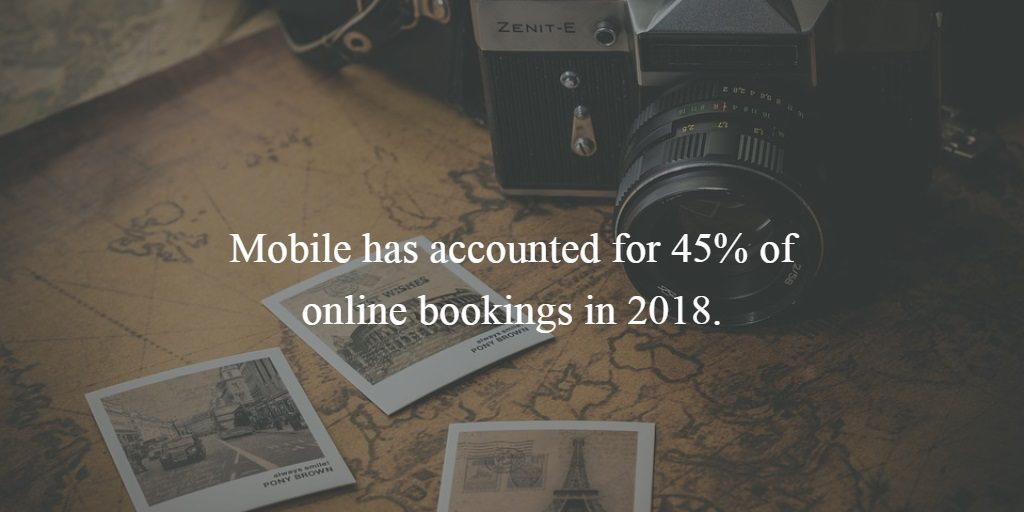Not all those who wander are lost.
We know what J.R.R. Tolkien meant to say, but appealing as it may sound in real life, it can’t be applied to your travel website.
If it’s not easily found on the internet and does not appear in your target audience’s searches and queries, it’s obviously not a good thing.
In other words, if your customers have to wander around the internet in order to find it, you’re lost, just like your potential profit.
And that’s a shame, especially if we bear in mind that digital travel sales worldwide are projected to reach $855.07 billion by 2021, which means that you risk leaving a lot of money on the table by keeping your website buried under an avalanche of well-optimised competitor websites.
Maybe the very concept of travel SEO is Greek to you, but as it can actually do wonders for your visibility, rankings and traffic, it’s important to put in an effort and do something about it.
So, now that we’ve established that SEO is of critical for the success of your website, here are a couple of tips to help you polish it and help your target audience find you.
1. Research Your Keywords
We’ll start with keywords simply because they’re like a compass you use to send visitors and potential customers your way.
These words and phrases that people use in order to find their next holiday destination have to be well researched, optimised, and placed properly across the different sections and elements of your website.
You can start your research simply by typing the different destinations and types of accommodation and travel you offer into the search engine search bar – hostel in [city name] or flights to [destination] can be a good starting point. Obviously, you’re going for destination-based and service-specific ones when you’re trying to unearth the best-converting keywords for your website.
However, it’s a much better idea to use dedicated keyword research tools such as Ahrefs, Google Keyword Planner, Google Correlate, or the WordStream Free Keyword Tool.
The trick is not only to find out what your potential customers are searching for when they want to travel, but also to analyse the search volume of relevant keywords. In other words, it’s not exactly the best idea to pick the most popular, high-volume keywords. All your competitors and all the big guys from the travel industry are using them too.
Instead, it’s much better to focus on more specific, long-tail keywords, which might be less competitive, but make up for their lower search volume by driving significantly better conversion rates.
The thing is that searchers, that is your potential customers, are more likely to use these longer search phrases when they’re near the point of making a purchasing decision, which means that you’re targeting people who aren’t window shopping, but those who have already pulled out their credit cards.
2. Step Up Your Content Marketing Strategy
Content marketing for travel and SEO go hand in hand because you do need to insert those keywords somewhere, and it’s best to have well-written service page copy and a blog packed with posts which will also make your visitors want to pack their bags right away.
Here are a couple of important details to bear in mind when creating your website content:
- While a search engine ranking factors study has shown that first-page results on average have 1,890 words, the travel industry is even more demanding in terms of length – 2,500 words and more is the gold standard.
- Take search intent into consideration. This is important for making your content relevant and relatable to your potential visitors. People will sometimes land on your website with no intention of purchasing immediately. And if you push your agenda and try to sell on every page, they will bounce off.
- Stunning visuals are a must. This doesn’t require any particular explanation. Travel is a very photogenic and glamorous industry, so sleek, colourful, and vibrant images can bring your website and articles to life.
- Use descriptive, creative, and emotive meta titles. While other industries use keyword-heavy meta titles, the ones that perform well in terms of conversions on travel sites contain words which evoke feelings of adventure, fun, safety or relaxation.
- Leverage a personal approach and storytelling. People will be more drawn to your blog posts if they’re not generic and standoffish in the sense of merely listing landmarks and spots that they can see if they visit a particular destination.
- Make sure to include a lot of internal links in your blog posts, so that your visitors can find the information they need easily and navigate your website more intuitively.
All these details will attract your target audience and engage them. But, their other, very important role is that they will make it easier for Google crawlers to access, analyse, and index your website. If your content is well optimised, your rankings will go up, right in front of your prospects’ eyes.
See our guide to SEO in tourism for more information.
3. Boost Your Site Speed
The faster your website loads, the more visitors will decide to stick around and explore it.
But, how to know whether your website is sluggish?
The average page load time for travel sites is 3.39 seconds. This means that if your site takes longer to load, you’ll suffer a higher bounce rate.
Given that travel websites have to be packed with images and video files, they’re prone to suffering from slow loading times.
There are a couple of simple tricks that will help you speed up your website:
- Minify and combine files. Java, HTML, and CSS files can be pretty clunky and demanding, which is why it’s essential to reduce the number of requests they receive by minifying and combining them.
- Reduce image size. Huge, high-quality images take ages to load, and they’re one of the main culprits behind a slow website. By reducing the size of your images, you’ll significantly speed up your website. If you aren’t sure how to perform this compression, use tools which will do it automatically.
- Use a Content Delivery Network. Instead of relying solely on the server that hosts your website, you can use other networks ready to handle more requests without sacrificing speed. This process actually caches your entire website on a global network of servers, meaning that your original server won’t be overwhelmed with requests as they will be routed to others, where your website is cached. Apart from being helpful when it comes to dealing with traffic surges, a CDN can also improve your speed by sending a visitor’s request to a server closest to them geographically.
- Don’t use autoplay videos. These are too intrusive and people don’t like them. OK, this is an understatement – your visitors hate autoplay videos. Besides, they affect your loading speed, because some people don’t have a fast internet connection, which means that your website will take longer to load, and your visitors won’t have it.
4. Build Links
This tactic is essential for the online reputation of your website.
Namely, the “company you keep” principle highly affects this niche, because your website has to be reliable, credible, and trustworthy, especially if you’re selling something.
By being featured on other, more popular and respectable websites, your content will come off as reputable.
However, building links in the travel industry can be a bit of a challenge, so you will need to put your thinking hat on.
For example, you can get in touch with your local authorities or the Local Chamber of Commerce. They usually promote local events and tourism, which is why they’ll be willing to list your business on their website.
It’s also a good idea to team up with a complementary business, and cross-promote each other’s content – there are companies offering rent-a-car services, local food markets, theatres, etc. It’s obvious that both parties could benefit from promoting each other.
5. Be Mobile Friendly
This is one of the most important requirements for any website. But, we need to add that the share of mobile bookings is steadily increasing. For example, mobile accounted for 45% of online bookings in 2018.
So, it’s extremely important to allow your visitors to access your website from their mobile devices and have a pleasant browsing experience, without encountering messy navigation or tiny, illegible letters.
Don’t forget that you should clearly state and convince your visitors that their personal information is safe if they decide to book and pay for your services via their smartphone.
6. Analyse Your Competitors
This is the one moment when online stalking is acceptable.
You have to know as much about your competitors as possible. The information you unearth will provide valuable insights regarding the keywords they rank for, what destinations they are offering, or how satisfied their customers are.
Check out their website, as well as their social media channels regularly, and pay attention to their offers, prices, and what their customers are saying, so that you can adjust and tweak your offers and website content based on that feedback.
If you’ve decided to invest in SEO, Cube Digital can help you come up with the best strategy. Read our travel company case study, which can give you a better idea of the things we can do for you. If you still have questions, you can always get in touch and we can figure out the best steps forward together.

I am the founder and manager of BeFound SEO and the main consultant. I started offering SEO services back in 2007 when I had to explain SEO, as most people had no idea what it was and how much it could help their business online. I still love seeing the results from SEO.
When I’m not creating great strategy, I am usually out hiking up a mountain.
Connect with me on the links below.






